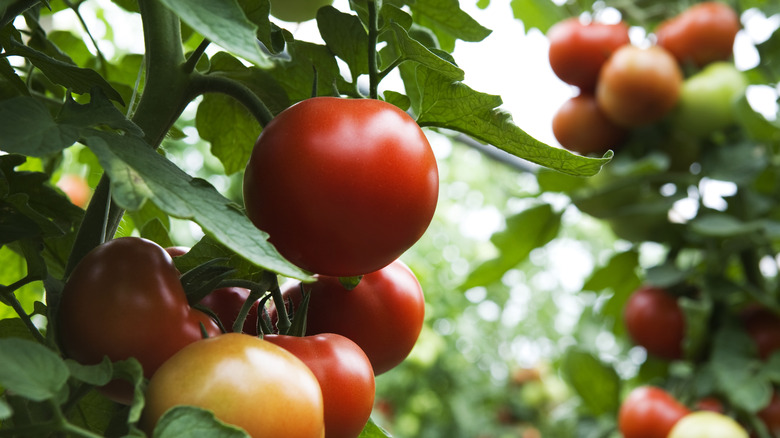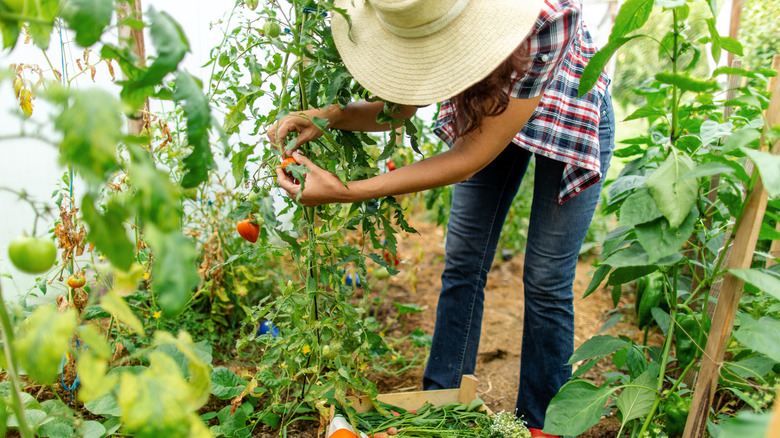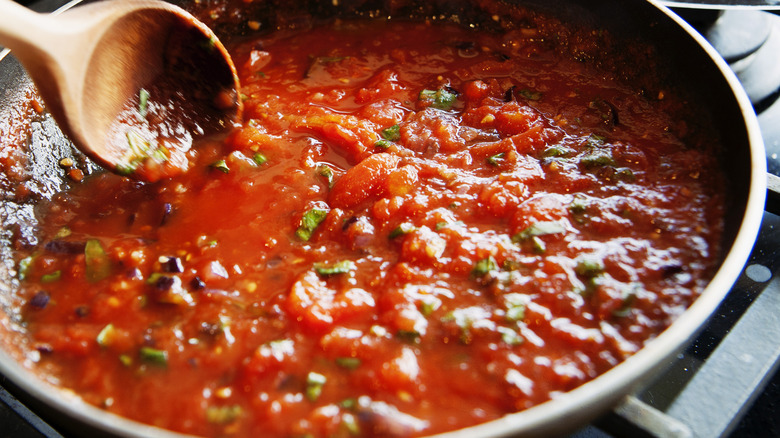Can You Eat Tomato Leaves?
Among the amazing bounty of summer produce, tomatoes get a lot of attention each year. They are the centerpiece of restaurant menus and the star of farmers' market stands, often accompanied by their popular companion plant, basil. Maybe you know a thing or two about tomatoes – which are, botanically speaking, a fruit, not a vegetable — but what about tomato leaves? They're perfectly edible, so if you're looking to add a bit of greenery and flavor to your next tomato-centric meal, throw in some tomato leaves.
Confusion about the safety of eating tomatoes and their leaves has persisted over centuries, in part due to the fact that they are a member of the nightshade family, which includes plants like oleander and hemlock that are toxic to humans, according to Encyclopedia Britannica. Even in Italy, tomatoes weren't widely consumed until the nineteenth century. Over the last two hundred years, tomatoes and other nightshade plants like eggplant and potatoes have been proven safe and delicious as they have been adopted into national cuisines worldwide, but not everyone has come to trust tomato leaves.
How to harvest tomato leaves
If you have access to a home garden or local farm where you can harvest your own tomatoes, you can also harvest tomato leaves. This can have the added benefit of providing some healthy pruning for the plants. Avoid breaking off large sections of the vine and simply pluck a few leaves at a time, opting for the smaller ones, which will be less fibrous than the larger leaves.
Make sure to harvest only organic tomato leaves that have not been sprayed with chemicals of any kind and to rinse them as you would with other greens before consuming. To add extra flavor and beauty to any meal, you can also harvest and cook with golden, star-like tomato blossoms. These are edible — though those with pollen allergies should proceed with caution — but be careful not to pick too many of them, or there will not be any tomatoes later in the summer.
Cooking with your tomato leaves
Tomato leaves are wonderfully aromatic, nutritious, and versatile. They can be used in the kitchen as you would with plenty of other sturdy greens, like kale and collards, or the tops of root vegetables like beets and carrots. Given their strong herbal fragrance, they blend well into a pesto with herbs like basil and mint.
For a no-waste, root-to-stem approach to cooking, toss a few tomato leaves into a fresh tomato sauce shortly before it finishes simmering. This sauce pairs perfectly with pasta. If you want to go the extra mile and make fresh pasta, you can collect extra leaves and dry them in advance, then incorporate the dried leaves into the pasta dough. This can be shaped into ricotta-filled ravioli, strands of fettuccine, or however you like. Serve it simply with diced fresh tomatoes to allow the unique flavor and color of your homemade pasta to shine through.



